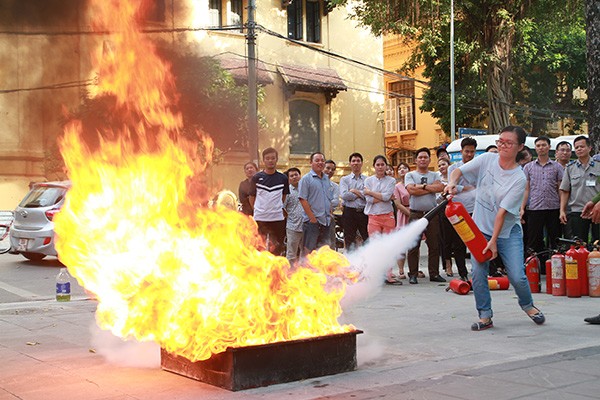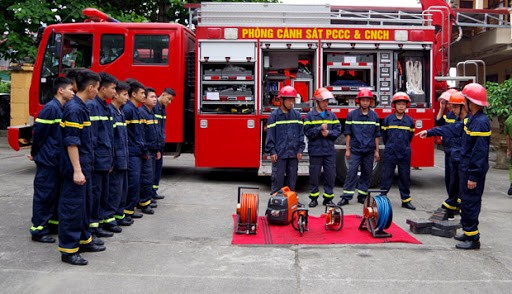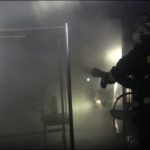Fire safety training courses aim to provide students with a deeper understanding of the causes of fires and explosions. You will be instructed on how to effectively use fire prevention tools, fire alarms, and extinguishing agents. Additionally, participants will be trained on what to do in the event of a fire, how to use handheld fire extinguishers, and personal and group escape techniques. This enhances self-protection capabilities and protects the community from fire and explosion hazards.
Local Classes
Fire safety training is conducted in the communes and wards within the locality. The time and location of the opening of the course will be announced directly by the People’s Committee at the communal level or the Police at the district level. Usually, the course is held at the headquarters of the corresponding fire protection management agency, such as the People’s Committee at the communal level (if managed by the People’s Committee) or the Police at the district level (if managed by the Police).

The Fire Fighting and Rescue Police Department, the Fire Fighting and Rescue Police Team under the provincial-level Police or district-level Police issue the Fire Fighting and Rescue Techniques certificate. It is valid nationwide for a period of 05 years from the date of issuance. After this period, the learner must attend retraining to be granted a new certificate.
Individuals who have received fire protection training for at least 06 months are eligible for the Fire Fighting and Rescue Techniques certificate.
Fire Safety Training Courses
Many organizations and training centers specializing in fire safety offer comprehensive courses and training on fire response, equipment usage, and incident management. Look for fire safety training centers near you and consider enrolling in their programs.

Fire safety classes aim to provide fundamental knowledge on dealing with fire and explosion risks and responding to specific situations in facilities. The training curriculum includes introducing basic measures to prevent and control fires, depending on the characteristics and nature of each facility’s operations. Additionally, the program focuses on recognizing and responding to flammable substances such as gasoline, oil, and liquefied gas, along with instructions on using conventional fire equipment.
Participants will be instructed on handling fire incidents at the facility, including fire-fighting processes, inspections, and utilizing available fire protection resources. They will also undergo practical training in using handheld fire extinguishers and executing realistic fire-related scenario drills.
The training fee for the PCCC certificate is approximately 800,000 VND/trainee. The fee includes materials, certificates, and equipment for the course.
Schools
Many universities and academies offer programs in fire safety management and facility safety. This could be a good option if you want to pursue a career in safety management and fire protection.

Fire safety training in schools is one of the main training programs of the University of Fire Protection. This university, under the Ministry of Public Security, has the primary task of training officers in fire protection at both undergraduate and college levels. Additionally, the university conducts professional and vocational training related to fire protection and carries out scientific research related to fire protection in the context of socio-economic development.
For children, basic fire safety knowledge and skills for handling fire and explosion situations are taught through extracurricular classes at school. Children are often the first victims in fires due to a lack of self-protection and escape skills in dangerous situations. Therefore, to ensure safety, parents need to teach children about fire prevention, fire response skills, and self-rescue techniques from an early age.
Target Participants for Fire Safety Training
According to Clause 1, Article 16 of Circular No. 66/2014/TT-BCA, the subjects that need to participate in fire safety training include:
– Individuals with fire command positions in enterprises, as specified in Clause 2, Article 37 of the Law on Fire Prevention and Fighting.
– Officers and members of the people’s fire protection team, the fire protection team of the establishment, and specialized branches.
– People working in environments with fire and explosion hazards or regularly exposed to flammable substances.
– Individuals working in facilities producing and trading fire protection equipment.
– Other subjects with requirements for fire safety training.
4 Steps to Handle a House Fire
We must acquire the necessary knowledge to effectively handle any fire incidents that may occur.



































